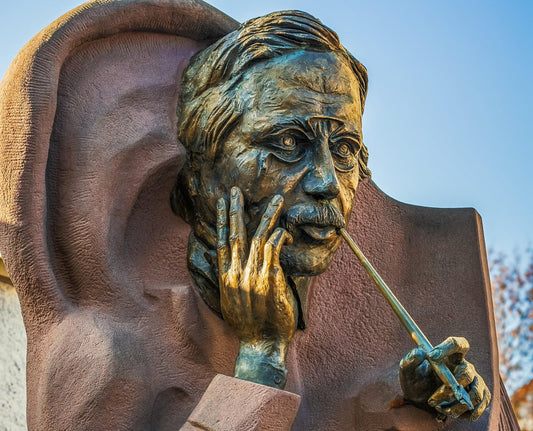 This Behringer crossover certainly does the job, but it's not something I'd want to have as part of my high end system.
When it comes to high-end audio, DSPeaker is an affordable, good sounding alternative I am aware of, and I am sure there are others that I have yet to pay attention to.
But the subject of DSP always brings the spectre of digital room or speaker correction, a huge can of worms I have yet to open.
I think we'll move on before the worms eat through my brain.
This Behringer crossover certainly does the job, but it's not something I'd want to have as part of my high end system.
When it comes to high-end audio, DSPeaker is an affordable, good sounding alternative I am aware of, and I am sure there are others that I have yet to pay attention to.
But the subject of DSP always brings the spectre of digital room or speaker correction, a huge can of worms I have yet to open.
I think we'll move on before the worms eat through my brain.
DSP
by Paul McGowan
Before we finish our long series on dividing frequencies in speakers, it probably makes sense to touch on the mother of all modern means of accomplishing the slicing and dicing of audio, DSP.
Digital Signal Processing (DSP) is, as its name implies, digital. Once music has been converted to bits and bytes there's much you can do that cannot also be accomplished with analog.
The term itself covers an extraordinarily broad category; everything from filters, to compressors, to…well…processing the signal into something it was not.
Your DAC has DSP in it, so too does your cell phone, computer, car radio, or just about anything that is digital and sound comes out of it.
Once you enter the realm of digital, the sky's the limit with what can be done. Signals can be delayed, enhanced, forwarded, EQ'd, repeated, quieted, compressed, expanded, and the list is rather endless.
If you're not too interested in high performance sound, you can get an off the shelf DSP for pretty low cost from a company more involved in the pro market than high-end audio.
 This Behringer crossover certainly does the job, but it's not something I'd want to have as part of my high end system.
When it comes to high-end audio, DSPeaker is an affordable, good sounding alternative I am aware of, and I am sure there are others that I have yet to pay attention to.
But the subject of DSP always brings the spectre of digital room or speaker correction, a huge can of worms I have yet to open.
I think we'll move on before the worms eat through my brain.
This Behringer crossover certainly does the job, but it's not something I'd want to have as part of my high end system.
When it comes to high-end audio, DSPeaker is an affordable, good sounding alternative I am aware of, and I am sure there are others that I have yet to pay attention to.
But the subject of DSP always brings the spectre of digital room or speaker correction, a huge can of worms I have yet to open.
I think we'll move on before the worms eat through my brain.
 This Behringer crossover certainly does the job, but it's not something I'd want to have as part of my high end system.
When it comes to high-end audio, DSPeaker is an affordable, good sounding alternative I am aware of, and I am sure there are others that I have yet to pay attention to.
But the subject of DSP always brings the spectre of digital room or speaker correction, a huge can of worms I have yet to open.
I think we'll move on before the worms eat through my brain.
This Behringer crossover certainly does the job, but it's not something I'd want to have as part of my high end system.
When it comes to high-end audio, DSPeaker is an affordable, good sounding alternative I am aware of, and I am sure there are others that I have yet to pay attention to.
But the subject of DSP always brings the spectre of digital room or speaker correction, a huge can of worms I have yet to open.
I think we'll move on before the worms eat through my brain.
- Choosing a selection results in a full page refresh.
- Opens in a new window.







